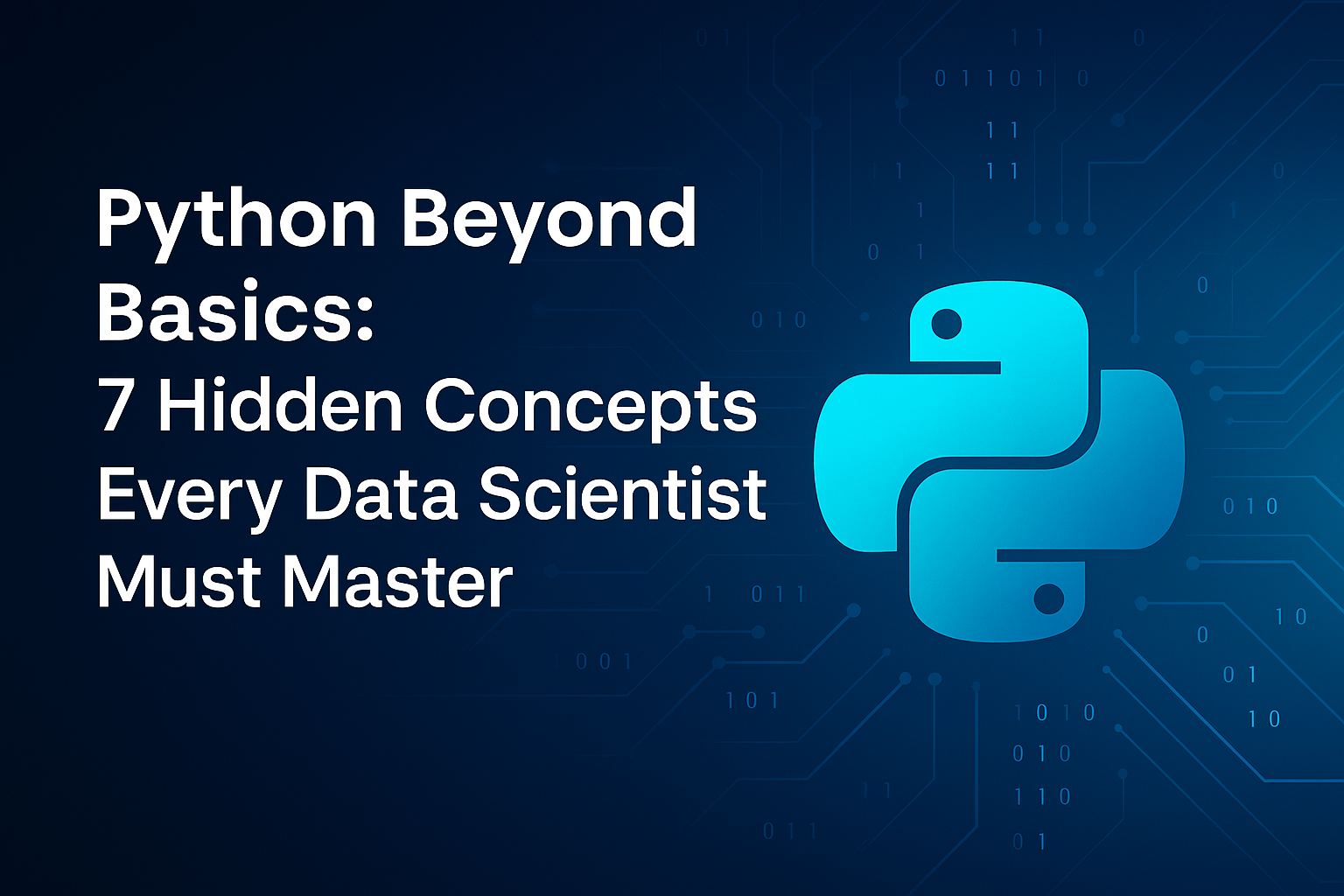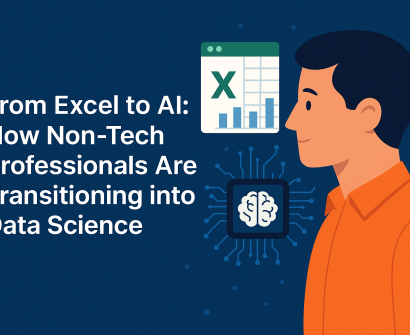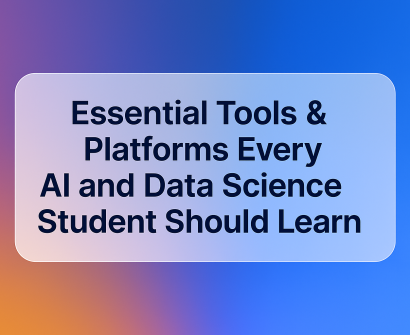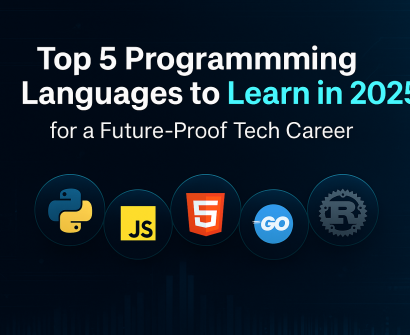
Introduction
So, you’ve mastered the basics of Python.
You can write loops, functions, and probably wrangle some data using Pandas or NumPy. But here’s the truth:
What separates great data scientists from average ones isn’t how many libraries they use—it’s how well they understand core Python.
Advanced Python isn’t just for backend developers or software engineers. For a data scientist, deep Python fluency means:
- Writing cleaner, faster code
- Optimizing memory usage
- Building scalable pipelines
- Debugging errors with precision
- Understanding how tools like Scikit-Learn and TensorFlow behave under the hood
In this blog, we’ll unpack 7 lesser-known but game-changing Python concepts that will level up your data science journey in 2025.
1. Iterators vs Generators: Lazy Is Smart
Iterators are objects with __iter__() and __next__() methods. They allow looping but can be memory-heavy.
Generators are iterators written with the yield keyword. They do not store all values in memory—making them highly efficient.
Why it matters:
For large datasets, generators can handle streaming without clogging memory.
Use Case:
Streaming text from large files, creating data pipelines, or feeding batches into a deep learning model in real-time.
2. Decorators: Add Magic to Your Functions
Decorators are functions that wrap other functions to enhance their behavior—without modifying the original code.
python
CopyEdit
def log_function(func):
def wrapper(*args, **kwargs):
print(f”Running {func.__name__}”)
return func(*args, **kwargs)
return wrapper
@log_function
def process_data():
pass
Use Case:
Log execution time, cache results, track model training calls—without cluttering core logic.
3. Context Managers & the ‘with’ Statement
Context managers automatically handle resource management like opening/closing files, DB connections, or API sessions.
You can create your own with:
python
CopyEdit
class FileOpener:
def __enter__(self):
self.file = open(‘data.csv’, ‘r’)
return self.file
def __exit__(self, exc_type, exc_val, exc_tb):
self.file.close()
Use Case:
Handling data extraction, model checkpoints, or resource cleanup during training.
4. Comprehensions with Conditions & Nesting
List, set, and dictionary comprehensions can make your data transformations elegant and concise:
python
CopyEdit
[x for x in range(100) if x % 2 == 0]
{col: df[col].mean() for col in df.columns if df[col].dtype == ‘float’}
Use Case:
Quick feature transformations, filtering columns, nested loops in ETL.
5. Multithreading vs Multiprocessing in Python
- Multithreading is great for I/O-bound tasks (like reading files or API calls).
- Multiprocessing works better for CPU-bound tasks (like model training or image processing).
Use the concurrent.futures or multiprocessing.Pool module for efficient implementation.
Use Case:
Parallel model training, image preprocessing, or scraping large volumes of data.
6. Python’s Data Model (Dunder Methods)
Dunder (double underscore) methods like __len__, __getitem__, __str__ allow your objects to behave like built-ins.
python
CopyEdit
class DataBatch:
def __init__(self, data):
self.data = data
def __len__(self):
return len(self.data)
def __getitem__(self, idx):
return self.data[idx]
Use Case:
Build custom ML datasets, model wrappers, or logger classes compatible with PyTorch or Scikit-Learn.
7. Functional Programming (map, filter, reduce, lambda)
Functional tools help you perform transformations without writing explicit loops:
python
CopyEdit
list(map(lambda x: x ** 2, [1, 2, 3, 4]))
- map() – Apply functions to a sequence
- filter() – Filter elements based on a condition
- reduce() – Aggregate elements into one output
Use Case:
Feature engineering, mini-batch calculations, or pipeline stages.
Bonus: Memory Profiling & Performance
Use tools like:
- memory_profiler
- line_profiler
- tracemalloc
…to profile your code line-by-line.
Why?
It’s critical when deploying ML models into production, optimizing APIs, or handling real-time data streams.
Final Thoughts
If you’re serious about becoming a high-performing data scientist, don’t stop at Pandas and Scikit-learn.
Master Python at its core—because that’s what top professionals and hiring managers look for.
Think like a coder. Solve like a scientist.
Ready to Go Further?
Join Codedge Academy’s Master’s in Data Science & AI program.
✔️ Weekend Live Classes
✔️ 100% Placement Assistance
✔️ IBM Certification
✔️ Real-World Capstone Projects







